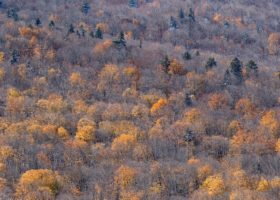
Field Guide to November 2019
As leaves continue to fall and the first flakes begin to fly, the oncoming cold weather seems to bring nature to a standstill. On the contrary, there remains a lot to be discovered in Vermont during this transitional period. Learn more in our Field Guide to November.
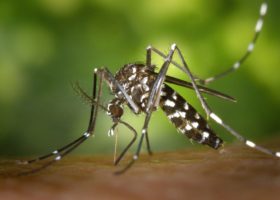
Asian Tiger Mosquito Found in Vermont
State Agriculture and Health officials announced that the Asian Tiger mosquito (Aedes albopictus) has been identified for the first time in Vermont. This normally tropical/subtropical species is a known disease vector for Zika, chikungunya and dengue viruses, infecting humans in countries where these diseases are present. The mosquitoes found in Vermont do not currently carry these viruses.
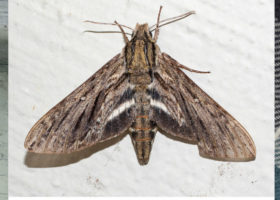
iNaturalists Discover More New Moths for Vermont
Over 1,475 biologists and naturalists have contributed more than 51,000 moth photo-observations to the Vermont Atlas of Life on iNaturalist. Together, we’ve discovered over 100 new species for Vermont, and iNaturalists have done it again. two species new to Vermont were discovered and one species that was only known from a historical record was rediscovered.
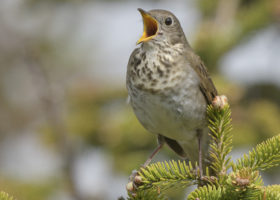
Mercury in the Mountains: VCE Research Yields More Questions than Answers
VCE’s recently published paper from our long-term research on mercury accumulation in montane forest birds describes unexpected results.
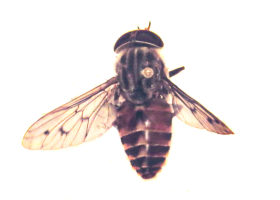
Fly Species New for Vermont Discovered by iNaturalist
You don’t have to go far to help the Vermont Atlas of Life discover species new to Vermont. You just have to be observant. A random fly entering a car window turns out to be the first record for the species in Vermont.
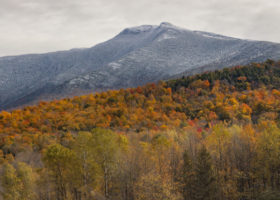
Field Guide to October 2019
October is a month of change. The forested hills fade from green to a kaleidoscope of red and gold that dazzles the eyes. Here’s your field guide to some moments that you might not otherwise notice during these few precious weeks.
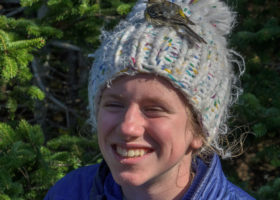
VCE’s Wrap-up Mansfield Visit Fuels Optimism
VCE’s wrap-up Mansfield banding session rekindled spirits and refueled optimism amidst recent sobering news about avian population declines. After a summer of relative scarcity on our ridgeline study site, we captured 82 birds. We now wish safe passage for the many migrants we all share and cherish.
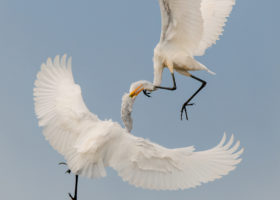
September 2019 Photo-observation of the Month
Congratulations to Kyle Tansley for winning the September 2019 Vermont Atlas of Life iNaturalist photo-observation of the month. The image of jousting Great Egrets in flight garnered the most votes.
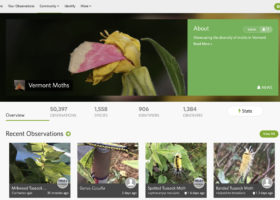
Tallying Vermont Moths One Image at a Time
There’s a new collection project that automatically gathers and presents all of Vermont moth data from iNaturalist in one easy place – Vermont Moths on iNaturalist. If you put a moth record in the Vermont Atlas of Life project on iNaturalist, or anywhere in iNaturalist – Vermont Moths will tally it.
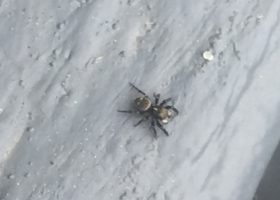
Introduced Jumping Spider Spotted in Vermont for First Time
On June 10th Jasper Barnes, a wildlife biology student at the University of Vermont, snapped a photo of a tiny…
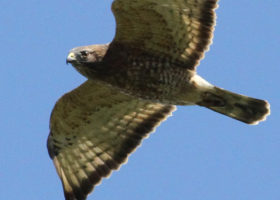
Field Guide to September 2019
Here is your field guide to some amazing migrations happening right now, and a few other natural history tidbits to look for this fall.
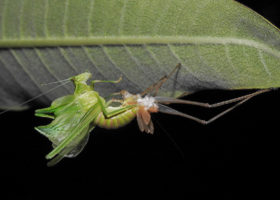
August 2019 Photo-observation of the Month
Congratulations to JoAnne Russo for winning the August 2019 Vermont Atlas of Life iNaturalist photo-observation of the month. JoAnne captured this Scudder’s Bush Katydid (Genus Scudderia) in the act of molting under a milkweed leaf.
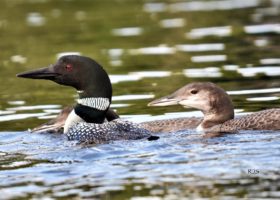
Loon Season Update: Late Nests and a Successful Rescue
VCE’s Eric Hanson provides this late-summer update from the water, including a couple of short rescued loon release video clips!
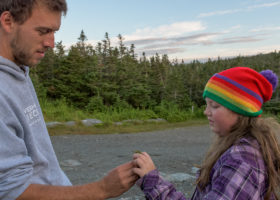
Mansfield Update: Avian Infiltrators from Northern Hardwoods
VCE’s final 2019 summer banding session on Mt. Mansfield was notable for the predominance of non-local birds and the absence of local breeders banded earlier in the season. Black-throated Blue Warblers stole the show.
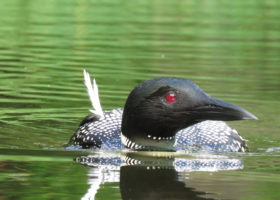
The Colby Loon
Rose West, VCE’s 2019 Alexander Dickey Conservation Intern, provides a personal account of monitoring a distressed loon for the Vermont Loon Conservation Project.
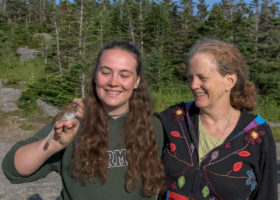
VCE’s Mansfield Season Winding Down
Shorter days, a near absence of bird song, molting adults, and the appearance of post-breeding wanderers last week signaled seasonal changes underway on Mt. Mansfield, and the winding down of VCE’s 2019 banding season there.
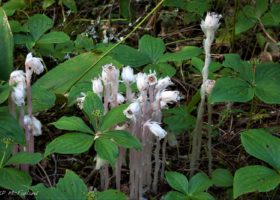
Field Guide to August 2019
We’ve still got plenty of summer here in Vermont and points north. In this edition of VCE’s monthly field guide to nature, we’ll celebrate a few audacious summer insects – but we’ll also alert you to animals on the move.
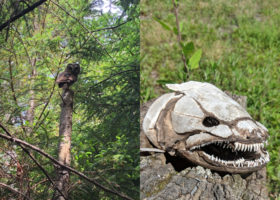
July 2019 Photo-observation of the Month
Congratulations to Alex Wells and Nathaniel Sharp for winning the July 2019 Vermont Atlas of Life iNaturalist photo-observation of the month. In this dead-heat…
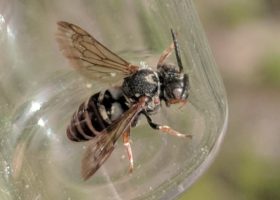
VTBees Update From the Field
Throughout the spring and summer, Vermont Center for Ecostudies biologists and citizen scientists alike have been scouring fields, roadsides, gardens, and all places flowers are found to survey bees for the Vermont Wild Bee Survey (VTBees).
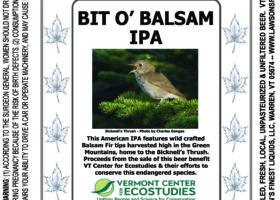
Bit O’ Balsam Beer Benefits Bicknell’s Thrush
Join us at Lawson’s Finest Liquids Taproom in Waitsfield on August 5 to launch LFL’s 2019 batch of Bit O’ Balsam American IPA. This specialty beer features Balsam Fir tips harvested at high elevations in the Green Mountains, with proceeds benefitting VCE’s Bicknell’s Thrush conservation efforts.
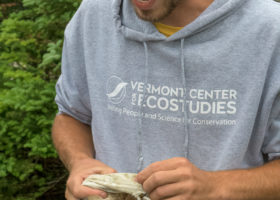
Mansfield Update: the Joys (and Pains) of Banding
VCE’s seventh banding session on Mansfield yielded our biggest total of the season (but still <50 birds), two very old Bicknell's Thrushes, and a female Sharp-shinned Hawk whose talons brought a grimace to Spencer Hardy's face.

VCE’s Jason Hill Receives High Honor as AOS Elective Member
VCE’s own Jason Hill recently received a high honor from the American Ornithological Society with his election as an Elective Member. Jason’s contributions to ornithology, both in his 5 years at VCE and beforehand, are nothing short of remarkable.
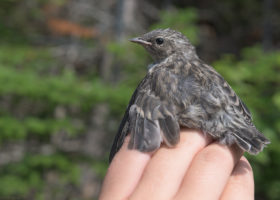
Mansfield Update: The Kids Are Coming
Week 6 of VCE’s 2019 banding season on Mansfield brought a second consecutive bump in mist net captures, and the first appearance of locally-hatched juveniles. Human youngsters also highlighted the week.
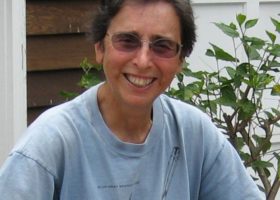
Celebrating Anne Aversa’s Life and Legacy
Anne Aversa, a longtime VCE friend and Strafford resident, passed away in the autumn of 2018. Included in her legacy of accomplishments are many citizen science contributions and a rich body of artwork. A new kiosk in Anne’s memory now graces the Strafford Town Forest entrance.
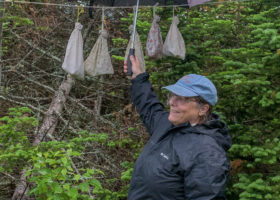
Mansfield Birds Rebound Modestly in Week 5
Mist net captures on Mt. Mansfield rebounded modestly during week 5 of VCE’s 2019 banding season. While encouraging, overall numbers are still abnormally low. A scarcity of yearling birds suggests that recruitment has been low, possibly resulting from a poor 2018 breeding season.
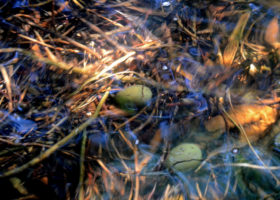
Field Update: New nests, flooded nests, and healthy competition
It’s July, and loon nesting season is in full swing! Here’s an update from the lakes and ponds from VCE’s loon biologist, Eric Hanson.
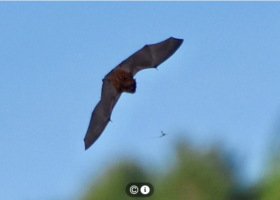
June 2019 Photo-observation of the Month
Congratulations to Ethan Borland for winning the June 2019 Vermont Atlas of Life iNaturalist photo-observation of the month. Ethan’s fantastic photo of a…
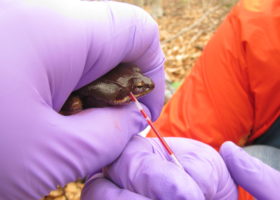
Poison in the Pools: Mercury in Vernal Pool Amphibians
VCE has a long history of investigating mercury concentrations in wildlife—particularly in montane ecosystems and Caribbean birds. Now, our groundbreaking investigation of mercury levels in vernal pool foodwebs has been published in the journal Ecotoxicology. Read on to find out more!
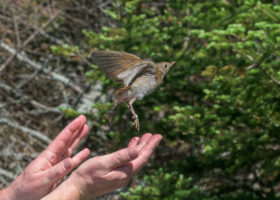
Mansfield One-month Update—Where Are All the Birds??
One month in to VCE’s 28th field season on Mt. Mansfield, bird populations are as low as they’ve ever been. We’ve netted only 43% of the numbers we had at this date a year ago. What is going on??
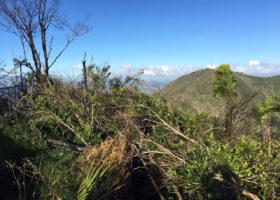
VCE and Colleagues Quantify Effects of Hurricanes Irma and Maria on Puerto Rico’s Forest Birds
In September of 2017, hurricanes Irma and Maria delivered a devastating one-two punch to Puerto Rico, causing massive defoliation of the island’s forests. While the detrimental effects of these storms on human populations were well-documented, little was known about how the island’s bird populations were affected—until now.
